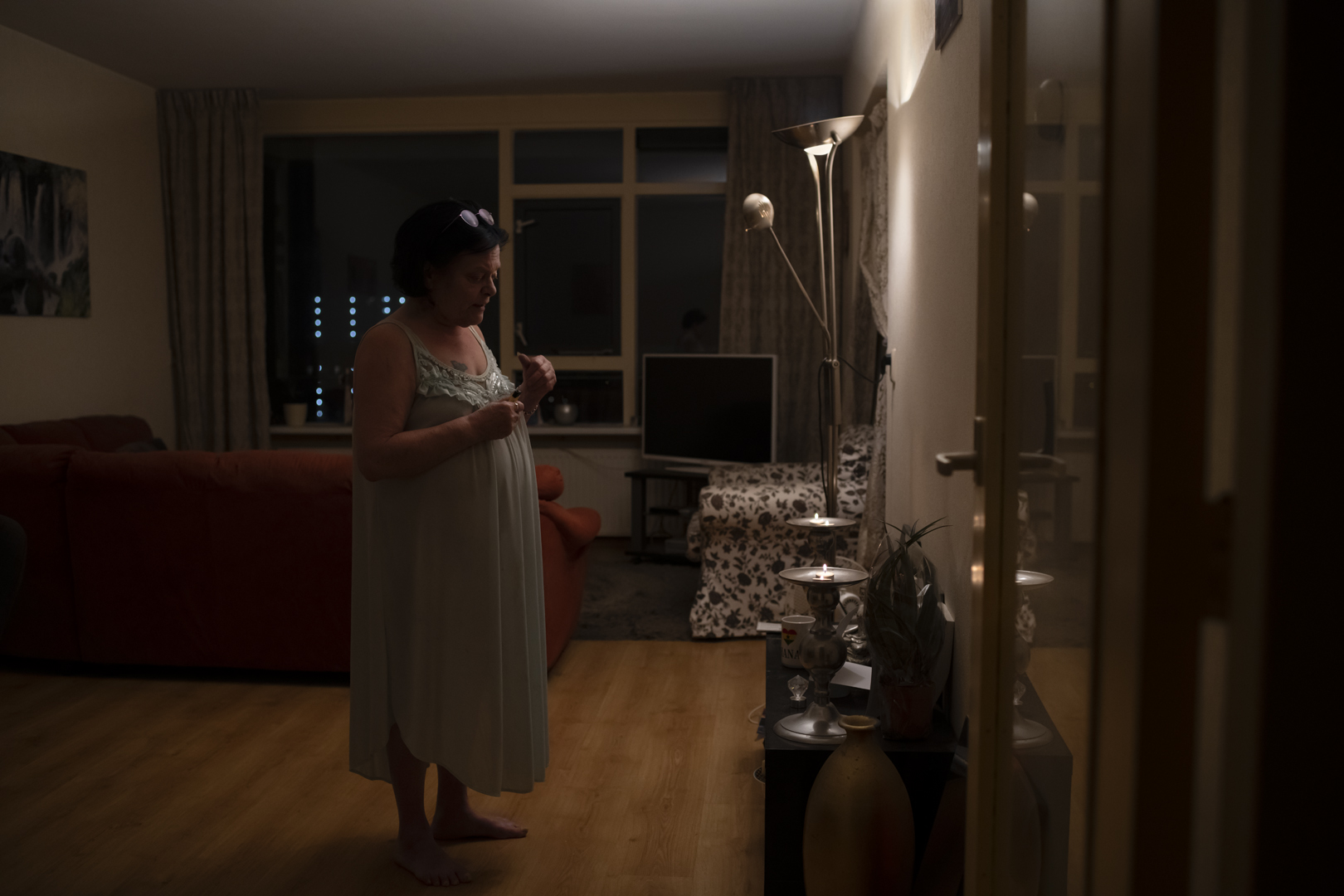
Maya
Her son Marc disappeared eleven years ago. Despite nothing has been found of Marc, Maya thinks her son is no longer alive. Even so she keeps searching.
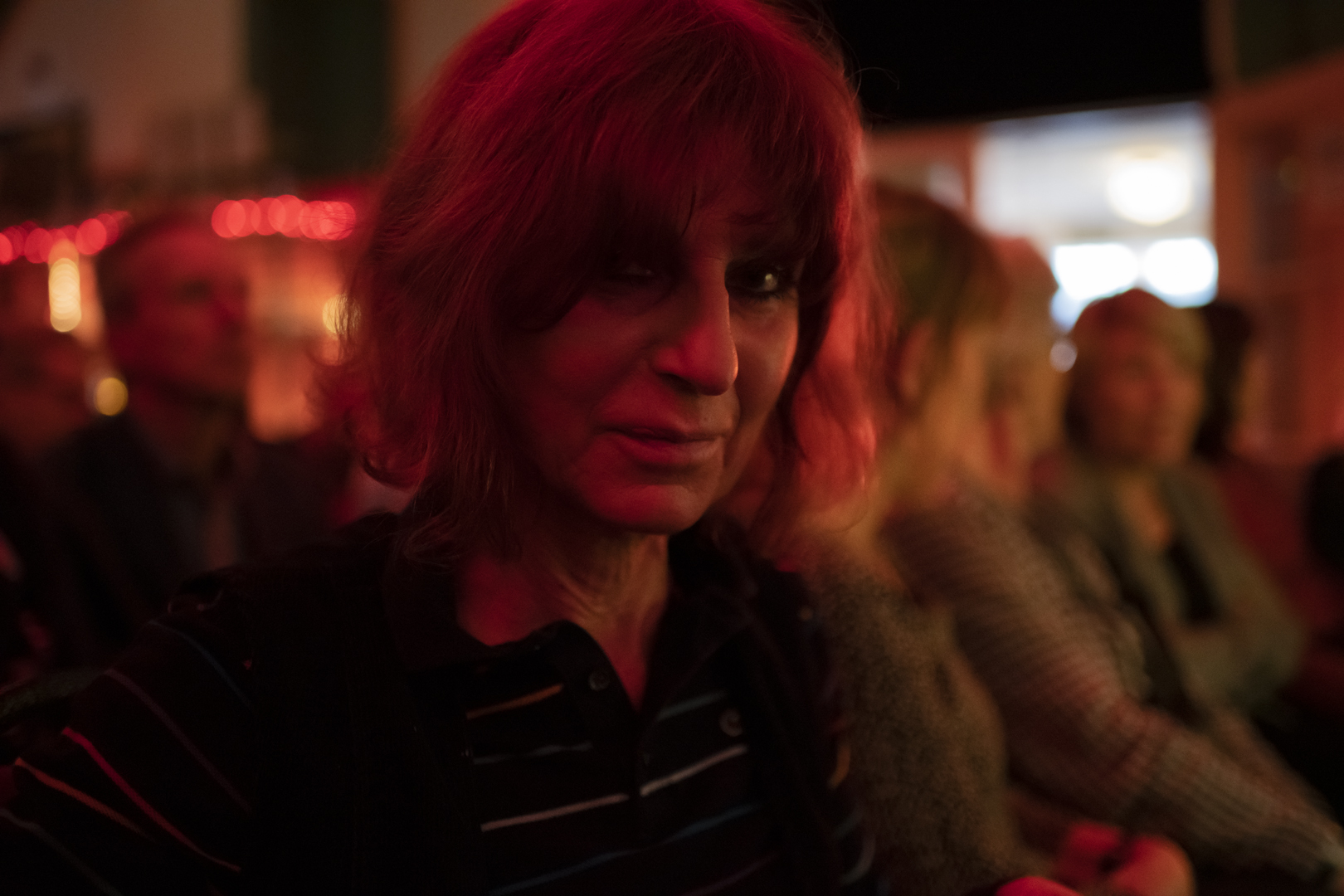
Karen
Karen, a former dj/host/newsanchor, is a passionate woman living a rich life full with a prominent role for self-expression, art and sexuality.
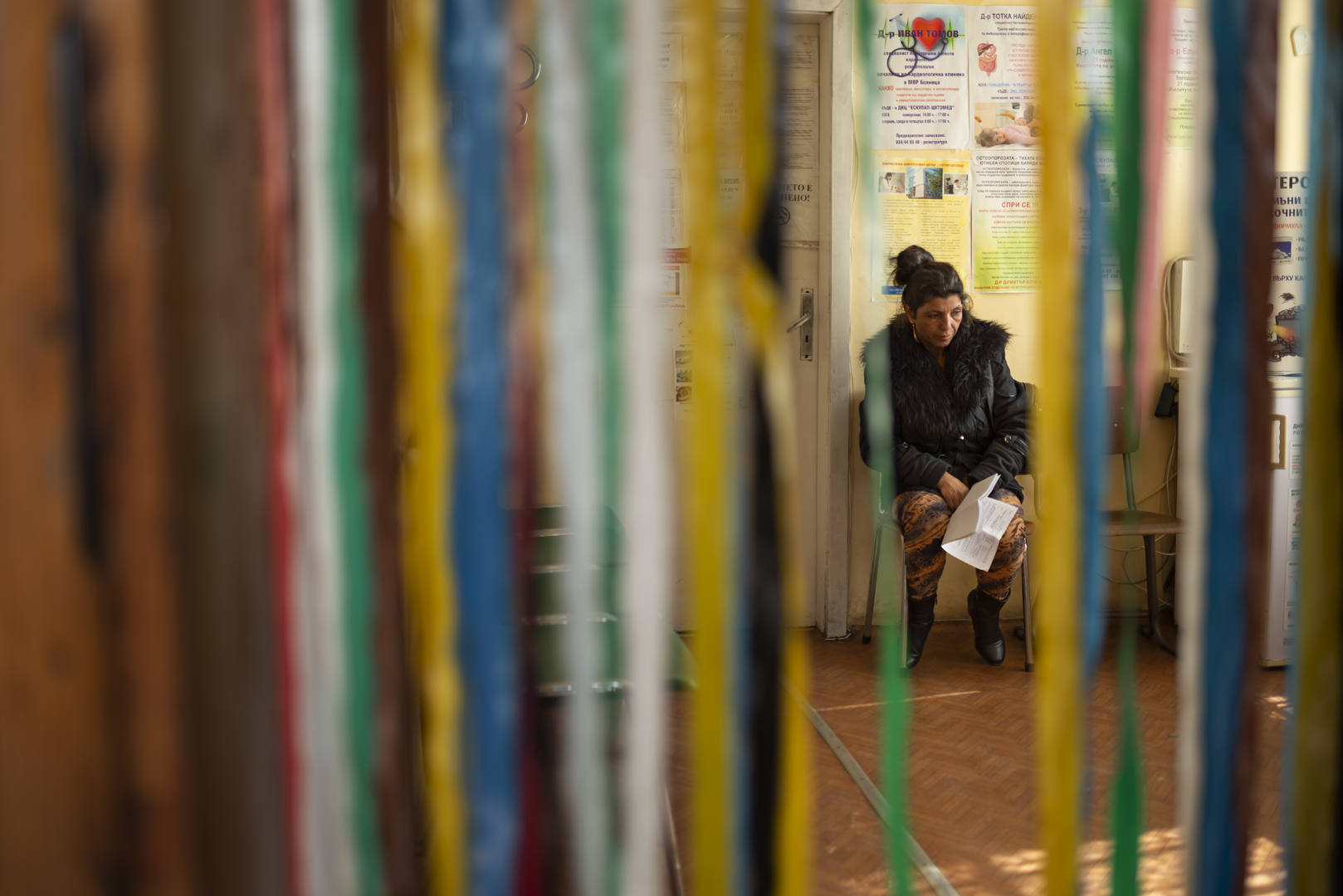
Emma
Emma was born in Bulgaria and is hoping for a better life. She is trying her best by selling a street newspaper to make ends meet.
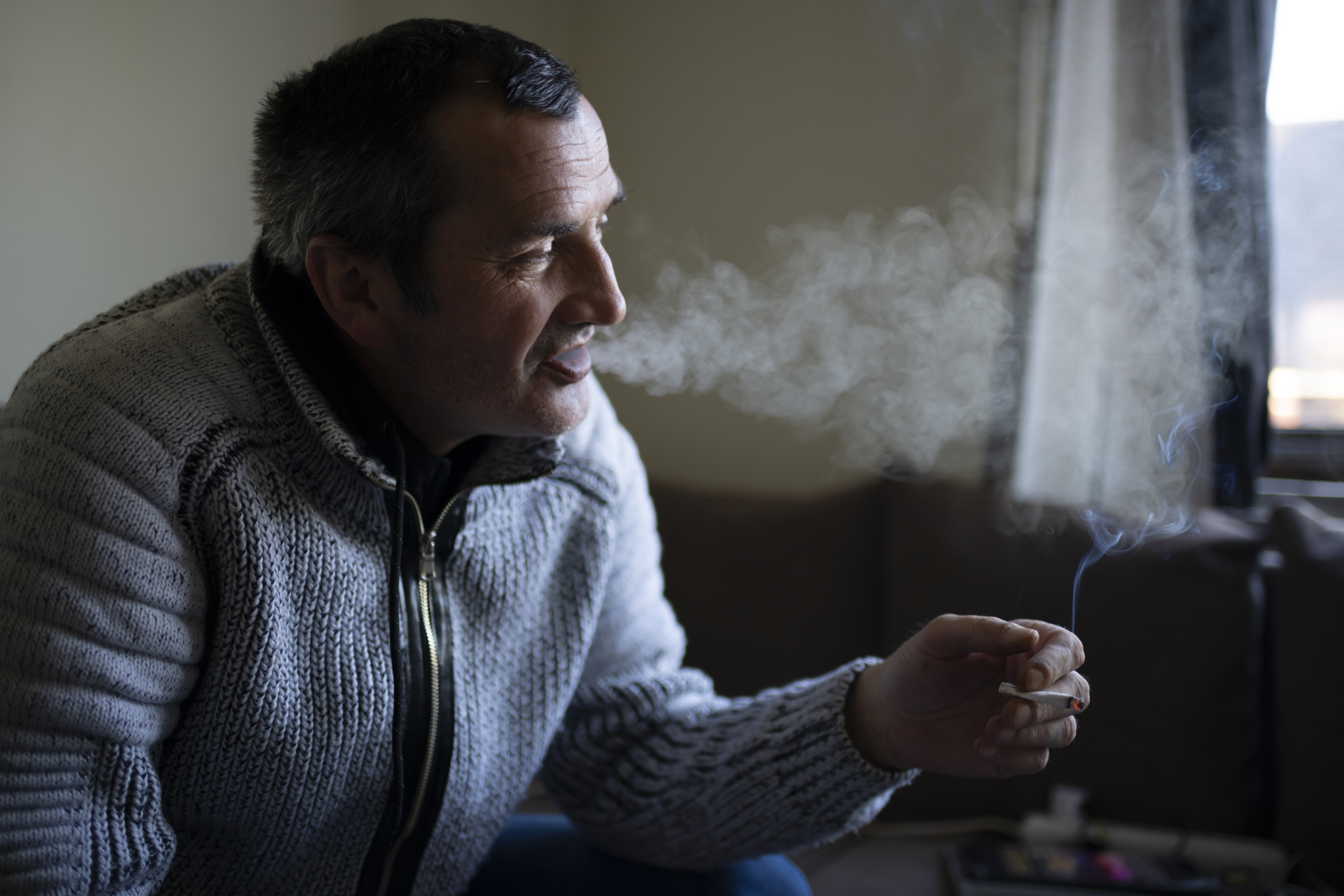
Willem
After being homeless, Willem now is getting his life together. He has a good relationship with his family.
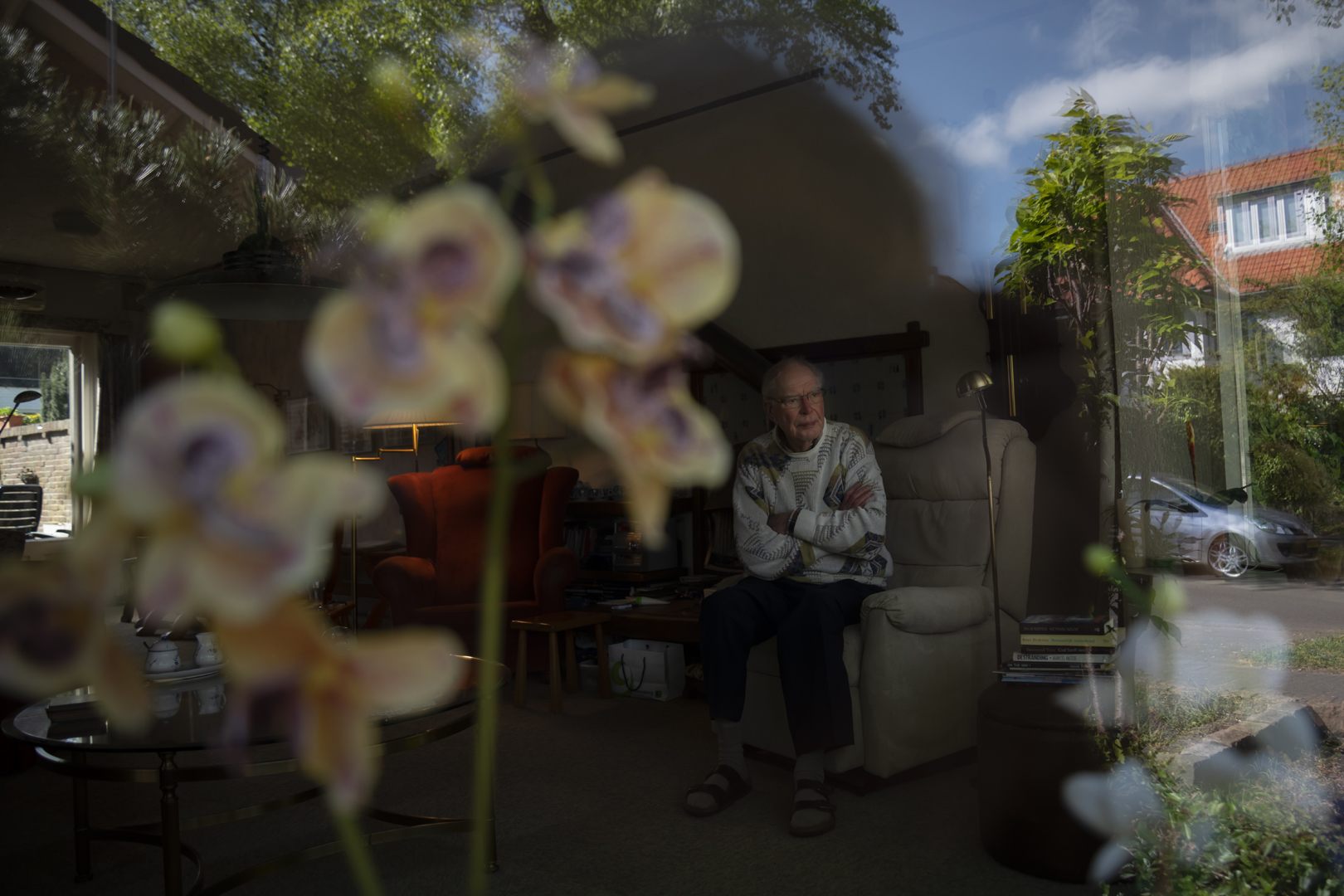
Ben
Ben, a ninety years old widower. He lives by himself, is independent, wants to organize his own life and tries to maintain his vitality.
Veronique Jansen meets people in her immediate vicinity. Resilient people with touching stories. Cataphote reflects her ‘quest’, in a sense serving as a mirror for her actions as an image-maker, in search for the balance between her subject and herself as the creator and a human being. Cataphote is her report.
‘Emma was selling The Big Issue, standing in the entrance of the supermarket I run my errands. She did this every day with kindness and patience. I was allowed to visit the small room she lives in and thought to myself: how on earth is it possible that people have to live like this in a prosperous town like Hilversum. I do not believe in photographing while being just an observer, so I decided to follow Emma in her daily routine to try and get inside the story. The confusion started following a photo shoot: she was no longer allowed to sell the newspaper from inside the supermarket. Thinking back, this is where my research started: how do I want to relate to the subject.
I decided to get inside Emma’s story and try to help her in retrieving her selling spot inside the store. Partly because I felt guilty and wanted to make it up to her, partly as a pretext to try and improve her situation. So I arranged a meeting with the shop manager and wrote a cv for her, because she was aiming for a regular job. Just a little effort for me, but it did change my part in the story. For a moment I thought we found some balance in our relationship. From one thing came another, together we checked her mail, got her a job, I tried to help with an insurance policy and accompanied her to Bulgaria.
My position as an image-maker is a complicated one and a struggle with ethical boundaries. Does practical assistance help her? In my opinion you can sometimes be of more help by writing the story, that will give other people pause for thought and possibly a reason for action. By constantly helping her, consequently Emma expects even more help. But I do not want her to change her behaviour. I do not want her to give desirable answers in order to get things done. I went too far.
Although in the beginning I thought Ben’s story would be about ‘loneliness’, along the way his ability to organize his life the best way possible really touched me. Photographing him I was looking for loneliness and finding it. But this slowly changed, the theme evolved to ‘zest for live’. Could I have stuck to loneliness theme? Or addressed the situation by doing more research? I was touched by Ben’s energy and decided we should take a look at the pictures together. This resulted in a snapshot of Ben indicating he really isn’t lonely at all. The photos are just me interpreting the story in the moment. I intend to always have the guts to open myself to what really is instead of what I expect to find.
Maya told me she misses her son. She last saw him at Christmas (2005). Also during the holidays, a good friend told her he probably is no longer alive. I listened to what actions she had undertaken and wondered if I could help her. And as sincere as my help would be, could it have consequences for the story? It’s more than evident I value helping people. For a moment I thought I had found my style of image-making while working with Maya, but I kept feeling some uneasiness. Did that mean I can only make a story if I am offering practical assistance? The thoughts kept running through my mind until I came to a conclusion about the way I want to work. I need to tell stories that lead to opening themes to discussion.
I admire the way Karen makes the most of her life. She passionately embraces life, being her positive self, enjoying the moments with people that matter to her. At least that’s the life Karen shows me. She is interesting and makes me curious, I write a synopsis about resilience and power, but struggle with the role I play and the story I want to tell, because this experienced media woman knows very well what she is (not) showing me. Does that make it impossible? Is her story thus less truthful? I had gotten used to baldly stepping in and recording, but that is not the way it works with Karen. She dictates the terms under which I am allowed to photograph and film. She determines the setting, but I’m in charge and make her portrait.
Willem often sits on a bench on the square near my work. We arrange a meeting at the homeless shelter so I can get to know him better. Thanks to Willem I grow as a photographer. I can still see me sitting there in the shelter and the exact moment I dared to grab my camera… I get to know his father as well and I really get involved. I record what I see and choose not to tell a sad story.
Thinking my view was an objective one, I realize my story is not objective at all, because I choose what I want to show. While immersing in Willem’s life, people close to me ask me why I am following a homeless person because it is not original at all. Still I do want to tell his story, I want to show how he struggles to overcome his drug-addiction and to find a home. Because Willem really touched me with his energy and perseverance.’
Veronique Jansen meets people in her immediate vicinity. Resilient people with touching stories. Cataphote reflects her ‘quest’, in a sense serving as a mirror for her actions as an image-maker, in search for the balance between her subject and herself as the creator and a human being. Cataphote is her report.
‘Emma was selling The Big Issue, standing in the entrance of the supermarket I run my errands. She did this every day with kindness and patience. I was allowed to visit the small room she lives in and thought to myself: how on earth is it possible that people have to live like this in a prosperous town like Hilversum. I do not believe in photographing while being just an observer, so I decided to follow Emma in her daily routine to try and get inside the story. The confusion started following a photo shoot: she was no longer allowed to sell the newspaper from inside the supermarket. Thinking back, this is where my research started: how do I want to relate to the subject.
I decided to get inside Emma’s story and try to help her in retrieving her selling spot inside the store. Partly because I felt guilty and wanted to make it up to her, partly as a pretext to try and improve her situation. So I arranged a meeting with the shop manager and wrote a cv for her, because she was aiming for a regular job. Just a little effort for me, but it did change my part in the story. For a moment I thought we found some balance in our relationship. From one thing came another, together we checked her mail, got her a job, I tried to help with an insurance policy and accompanied her to Bulgaria.
My position as an image-maker is a complicated one and a struggle with ethical boundaries. Does practical assistance help her? In my opinion you can sometimes be of more help by writing the story, that will give other people pause for thought and possibly a reason for action. By constantly helping her, consequently Emma expects even more help. But I do not want her to change her behaviour. I do not want her to give desirable answers in order to get things done. I went too far.
Although in the beginning I thought Ben’s story would be about ‘loneliness’, along the way his ability to organize his life the best way possible really touched me. Photographing him I was looking for loneliness and finding it. But this slowly changed, the theme evolved to ‘zest for live’. Could I have stuck to loneliness theme? Or addressed the situation by doing more research? I was touched by Ben’s energy and decided we should take a look at the pictures together. This resulted in a snapshot of Ben indicating he really isn’t lonely at all. The photos are just me interpreting the story in the moment. I intend to always have the guts to open myself to what really is instead of what I expect to find.
Maya told me she misses her son. She last saw him at Christmas (2005). Also during the holidays, a good friend told her he probably is no longer alive. I listened to what actions she had undertaken and wondered if I could help her. And as sincere as my help would be, could it have consequences for the story? It’s more than evident I value helping people. For a moment I thought I had found my style of image-making while working with Maya, but I kept feeling some uneasiness. Did that mean I can only make a story if I am offering practical assistance? The thoughts kept running through my mind until I came to a conclusion about the way I want to work. I need to tell stories that lead to opening themes to discussion.
I admire the way Karen makes the most of her life. She passionately embraces life, being her positive self, enjoying the moments with people that matter to her. At least that’s the life Karen shows me. She is interesting and makes me curious, I write a synopsis about resilience and power, but struggle with the role I play and the story I want to tell, because this experienced media woman knows very well what she is (not) showing me. Does that make it impossible? Is her story thus less truthful? I had gotten used to baldly stepping in and recording, but that is not the way it works with Karen. She dictates the terms under which I am allowed to photograph and film. She determines the setting, but I’m in charge and make her portrait.
Willem often sits on a bench on the square near my work. We arrange a meeting at the homeless shelter so I can get to know him better. Thanks to Willem I grow as a photographer. I can still see me sitting there in the shelter and the exact moment I dared to grab my camera… I get to know his father as well and I really get involved. I record what I see and choose not to tell a sad story.
Thinking my view was an objective one, I realize my story is not objective at all, because I choose what I want to show. While immersing in Willem’s life, people close to me ask me why I am following a homeless person because it is not original at all. Still I do want to tell his story, I want to show how he struggles to overcome his drug-addiction and to find a home. Because Willem really touched me with his energy and perseverance.’
This project is made by Veronique Jansen
Video and photography Maya
Maya Bor, Charlotte
Video and photography Ben
Ben Achterberg
Dilsad Aytekin
Video and photography Karen
Karen van den Winkel
Ben Cramer
Tomas Ross (Willem Hogendoorn),
Shaffy Vivant: Sylvia Alberts, Machteld van der Gaag, Rolinda Kross, Ine Kuhr, Nico van der Linden
Thanks to Torpedo Theater Amsterdam, Vorstin Hilversum and Nieuwe KHL Amsterdam
Video and photography Emma
Emma Voynova
Video and photography Willem
Willem Blanken
Thanks to Cocon Hilversum
Soundtrack : Peter Vandrie
Voice-over : Cees van Zijtveld
Special thanks
Simone Bennett, Stef van Breugel, Sandra Fossen, Jan Gitsels, Jos van den Hende, David Krooshof, Marc Prüst, Bas Vroege, Andrea Werkhoven
Fotoacademie Amsterdam: Frits de Coninck, Tara Fallaux, Aleid Denier van der Gon, Matt de Groot, Ruud de Jong, Nicole Segers, Eva Sjerps and my classmates
Although the stories all differ, they have one thing in common: the main characters try very hard to make the most of their lives. Willem has recently found a home in Huizen. On a daily basis he comes to Hilversum on his bike to visit the shelter. He regularly sees his family. Maya fell in love six months ago and is in a relationship. Ben added a treadmill to his private ‘gym’ so he can still jog when the weather is bad. He is taking driving lessons hoping to get his driving license back shortly. Karen told me about her ‘skin hunger’ during the lockdown period. She is very careful, but has started visiting concerts again. Emma found an apartment in Hilversum, where she lives with her husband, son, daughter with partner and their child. She never got permission again to sell The Big Issue at the supermarket and I have not seen her since our last telephone call.
